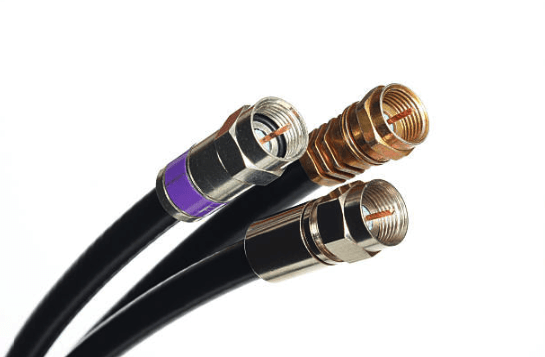Coaxial cables have been a popular product used to transmit radio and video signals since way back at the beginning of the 20th century. Espenschied and Affel filed the patent for coaxial cable in 1929, which was granted in 1931. They have been used to transmit data for a range of purposes ever since.
This nifty innovation is capable of efficiently transporting high-frequency signals, which makes them perfect for broadband applications. They’re also ideal for providing the link between satellites and devices –- making them efficient and effective for television signals.
Their shielded design also makes them durable, with their outer sheath providing protection to the conductors inside which share a single axis – hence the name ‘coaxial’. Not all are the same, though. Here are five of the most popular options and the different options they bring to the table.
RG-6 Coaxial Cable
This is a generic term used for the coaxial cabling used in most residential properties. It has an impedance of 75 ohms, is made from insulated, copper-clad steel or solid copper centre conductors and are typically used for cable television.
RG-59 Coaxial Cable
This is the lightweight version of the RG-6, with a thinner conductor and less insulation and shielding. This makes them a low-cost, easy to install option for short-range, low-frequency applications like analogue television signals of basic CCTV (non-HD) setups.
RG-11 Coaxial Cable
This is the evolution of the RG-6 and offers far superior performance as it has a much higher-gauge wire. This is the preferred option for HDTV signals, although the extra thickness can make installation more difficult as the cable is not as flexible.
Hybrid Fibre-Coaxial
Commonly known as HFC, this is a system where fibre optic cables are run to a node and then split to individual homes using coaxial cables. This has commonly been used for pay television services in Australia since the 1980s and is now used to deliver the NBN to residences.
Hard-Line Coaxial Cable
This was an extremely popular option until about 2005, from the era when copper was king. Before fibre optics became the norm, these heavy cables (almost two inches thick) were used in buildings to transport data. It could carry hundreds of channels of television, thousands of phone calls and provide a decent enough internet connection for a small to medium business.
Semi-Rigid Coaxial Cable
Instead of using a softer insulation casing, these cables are made from solid copper. They offer superior screening – especially at higher frequencies – and are much more durable. Semi-Rigid cables are not nearly as flexible, though.
Triaxial Cable
For those looking for more bandwidth, this is a preferred option. It adds an extra layer of insulation and a second conducting sheath for greater bandwidth and less outside interference to the signal. The added copper brain effectively acts as a shield and improves performance.
Twinaxial Cable
These variants have two inner conductors instead of the standard one in coaxial cables which provides major benefits in short-range, high-speed applications. That makes Twinaxial cabling the preferred option for local area networks and other computing applications.
Want to become qualified in the area of cabling? Contact us on 1300 369 320 to learn more.

